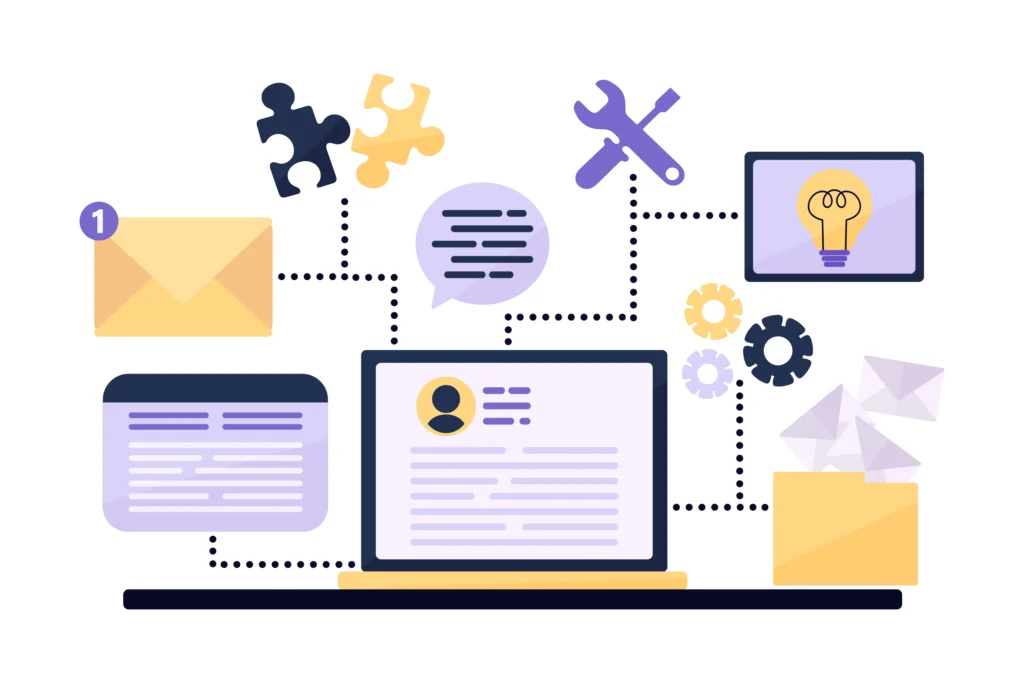In the rapidly evolving landscape of artificial intelligence, language models have become indispensable tools for various applications, from chatbots to content generation. Large Language Models (LLMs) like GPT-4, BERT, and their derivatives are at the forefront of this revolution. As these models gain traction, choosing the right framework to develop, fine-tune, and deploy LLM-based applications becomes crucial. This article delves into the best LLM-based frameworks, providing a detailed analysis of their features, benefits, and how they rank in the AI community.
Table of Contents
What Are LLM-Based Frameworks?
LLM-based frameworks are software platforms that provide the tools and libraries needed to develop applications using large language models. These frameworks simplify the process of building, training, and deploying AI models, making them accessible even to those without extensive programming expertise. The best LLM-based frameworks offer flexibility, scalability, and support for state-of-the-art models, ensuring that developers can create powerful AI-driven applications.

Top LLM-Based Frameworks for AI Development
1. Hugging Face Transformers
Hugging Face Transformers is arguably the most popular LLM-based framework in the AI community. Known for its extensive library of pre-trained models, including GPT, BERT, T5, and many others, this framework is a go-to for developers seeking to implement state-of-the-art NLP tasks.
- Key Features:
- Pre-trained Models: Hugging Face offers a vast collection of pre-trained models, which can be fine-tuned for specific tasks.
- Ease of Use: The framework is user-friendly, with extensive documentation and tutorials.
- Community Support: A vibrant community contributes to the library, ensuring continuous updates and improvements.
- Best For:
- Text classification
- Sentiment analysis
- Machine translation
- Question answering
2. OpenAI API
OpenAI API, based on GPT models like GPT-3 and GPT-4, offers unparalleled capabilities in natural language understanding and generation. Although not an open-source framework like Hugging Face, the OpenAI API provides powerful tools for building sophisticated AI applications.
- Key Features:
- Advanced Capabilities: Supports complex tasks such as content generation, summarization, and conversational AI.
- Scalability: Handles large-scale deployment with ease.
- Ease of Integration: Simple API calls make it easy to integrate into existing applications.
- Best For:
- Content generation
- Chatbots
- Code generation
- Automated customer support
3. TensorFlow
TensorFlow, developed by Google, is one of the most powerful frameworks for machine learning, including LLM-based applications. With its robust ecosystem, TensorFlow offers tools for training, deploying, and scaling AI models across various platforms.
- Key Features:
- Flexibility: Supports both low-level operations and high-level APIs for building LLMs.
- Scalability: Can be used for deploying models on cloud platforms, mobile devices, and more.
- Extensive Documentation: A wealth of resources is available to help developers of all levels.
- Best For:
- Custom model development
- Large-scale training and deployment
- Research and experimentation
4. PyTorch
PyTorch, another leading framework in the AI community, is widely used for research and production. Developed by Facebook’s AI Research lab, PyTorch is known for its dynamic computation graph, which makes it particularly suited for applications that require flexibility.
- Key Features:
- Dynamic Computation Graph: Allows for more flexibility during model development.
- Strong Community Support: Extensive community resources, including tutorials and forums.
- Integration with Other Tools: Easily integrates with other AI tools and libraries.
- Best For:
- Research-oriented projects
- Custom model building
- Experimentation with novel architectures
5. AllenNLP
AllenNLP is a specialized framework for natural language processing (NLP) tasks, built on top of PyTorch. It is designed to make it easier for researchers and developers to experiment with new ideas in NLP.
- Key Features:
- Pre-built Models: Includes a library of pre-built models for common NLP tasks.
- Customization: Allows for easy modification of models and training procedures.
- Comprehensive Documentation: Detailed documentation and tutorials for beginners and experts alike.
- Best For:
- NLP research
- Developing custom NLP models
- Rapid prototyping of NLP applications
Factors to Consider When Choosing an LLM-Based Framework
When selecting an LLM-based framework, it’s important to consider several factors to ensure that the framework meets your specific needs.
- Ease of Use: For those new to AI development, a user-friendly framework like Hugging Face Transformers may be ideal.
- Scalability: If you plan to deploy models on a large scale, frameworks like TensorFlow and OpenAI API offer the scalability needed for production environments.
- Flexibility: For research and experimentation, PyTorch or AllenNLP provides the flexibility required to explore new ideas.
- Community Support: A strong community can provide invaluable resources, from tutorials to pre-trained models, which can accelerate development.
Conclusion
The best LLM-based framework for your project depends on your specific requirements, including the complexity of the task, the need for scalability, and your level of expertise. Hugging Face Transformers stands out for its comprehensive model library and ease of use, making it an excellent choice for a wide range of applications. However, if you’re looking for more advanced capabilities, the OpenAI API or TensorFlow might be better suited for your needs. PyTorch and AllenNLP are ideal for those who require flexibility and are engaged in research or custom model development.
By carefully evaluating these factors and understanding the strengths of each framework, you can select the best LLM-based framework to power your next AI-driven project.

This isn’t just something to read — it’s something to return to, like a favorite place.